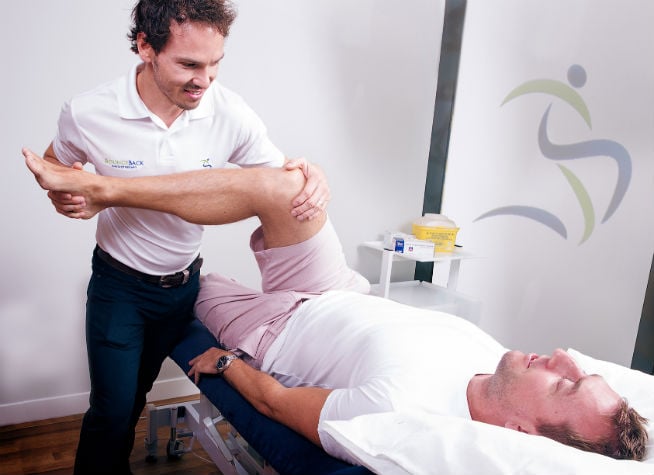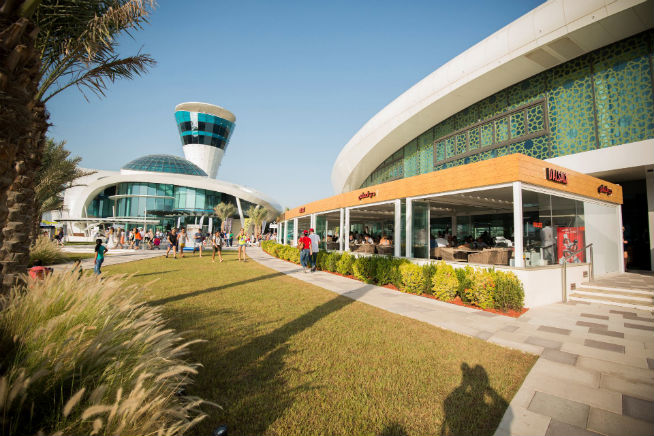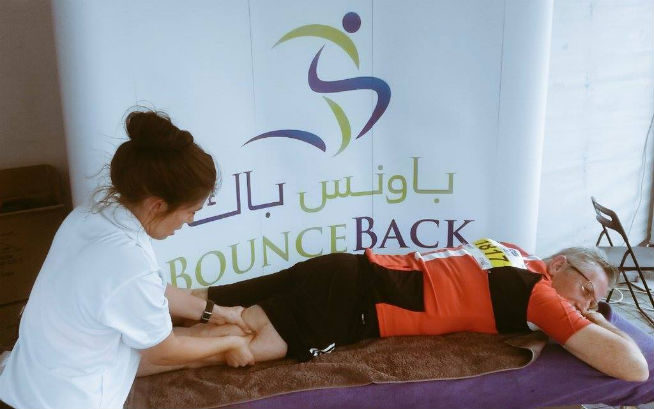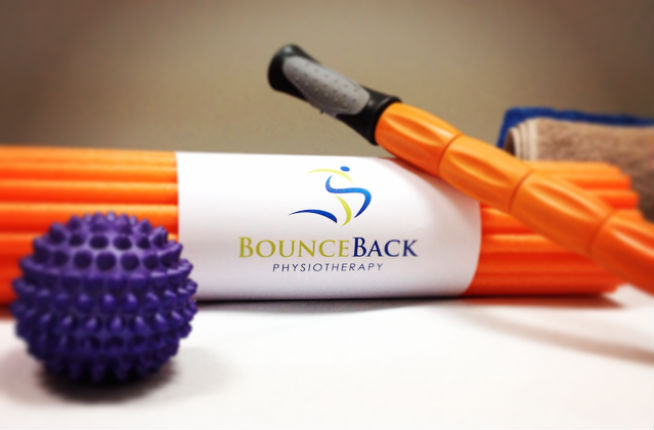The running doctor: How to avoid sports injuries
What’s On chats to Tim Fletcher from BounceBack Physiotherapy about how to be a better athlete and avoid sports injuries.
More…
– Fun runs in AUD
– Running guide to AUD
– Cycling guide to AUD
It doesn’t matter if you’re a seasoned athlete taking part in one of Abu Dhabi’s races or triathlons, or a keen beginner putting on those running shoes for the first time – when it comes to exercise and keeping fit, one of the biggest hurdles you’ll face is injury.

Muscle tears, pulled hamstrings, knee injuries, aching necks and backs are common amongst athletes who push too hard, or do too much exercise too soon, along with DOMS (delayed onset muscle soreness) where your aching body will quite literally seize up a day or two after you’ve exercised to excess.
Training too soon after injury can be equally as bad and make injuries worse, and for beginners there’s another issue – too much exercise too soon can lead to pain and can put people off keeping fit for life.
So how do you go about preventing injuries and enhance your performance? What’s On asked Tim Fletcher, the owner of Abu Dhabi’s newest treatment centre, BounceBack Physiotherapy, which opened last week in Yas Marina.

Aussie Tim has a masters degree in physiotherapy. He specialises in sports and spinal treatments and in his spare time he cycles at TrainYas, plays rugby and has recently played for the UAE national team (he’s been a UAE resident for three years, meaning he qualifies). He also competes in triathlons and is a keen golfer. Here, he explains what you can do to keep your body free from aches and pains, and how a physio can help if you do overdo it.
So many people do too much, too soon when exercising. And that’s the main reason we see patients. You’ve got to build up to exercise slowly. We see people who have done nothing for six months then go and do a bootcamp every day for two weeks – and then can’t move for the following two weeks. They’re intelligent people but they’ve not been given the correct guidelines. So build slowly and set goals. If you want to do a triathlon, you can’t train one week before the event. Also, make sure you enter events you know you can do. You wouldn’t want to try an elite level event for your first triathlon. A physio can guide you on how much exercise you should do.
Make sure you have a rest day. People are highly motivated to start with when they take up exercise but then by the end of the first week they’re not moving. Rest days are as important as days out exercising, so that muscles can heal. Your performance in the future will decrease if you don’t give your muscles time to recover. That’s why so many people over train and can potentially injure themselves, or they get demotivated and they quit. Some people decide they’re not a runner because they didn’t improve on their second run. You need to be patient and give your body time to recover. Many self-conclusions are made and we have to tell patients the opposite of what they believe. We tell people who don’t think they can be runners that they can be.
You can train soon after DOMS, if it’s mild. If you’ve suffered from DOMs for 24 hours and you feel some muscular soreness, but it’s not serious, it’s a good soreness, you can then go out for a light training session – make it low intensity but longer in duration to get the blood flowing again. This can speed up the recovery process. Sitting at a desk is the worst thing for DOMS. We see people who sit at work all day and then sit on the sofa all night and we’re expected to get them going again. You need to get joints moving and muscles pumping, even if it’s just walking around at lunch, or walking around when you’re on the phone. If you have full range of motion after DOMS, but you’re a little tight, you’re OK to go out again. If you think a physio session is needed, don’t go out. That’s particularly important if you’re suffering from lower back problems.

It’s good to stretch. Some studies suggest it doesn’t enhance sporting performance. My argument is that, as youngsters, we’re told to stretch and I think it’s important as a part of mental preparation. Stretching increases flexibility of the muscles but you have to do a stretch for around 60 seconds – a five second stretch of a calf muscle won’t have much of an effect. If you’re a runner, don’t stretch to start with – go for a very slow jog for four to five minutes. Then stretch. Your muscles will be warm and will stretch further. Then do your workout and then stretch afterwards. Physio can help show you the norms of how far your muscles should stretch. Never have a quick stretch and then start with sprints. I once played football with my mates and I didn’t stretch – I sprinted for a ball and my hamstring went. Of course, stretching can be time consuming and we all lead busy lives. If you’re cycling at Train Yas for example, and you’ve not got time to stretch, take it easy and slow on the first lap to warm up.
Prevention is better than cure. If you’re started a programme from scratch or picked up the intensity of your training, say you’ve gone up 10 to 20 per cent, it’s worth seeing a physio. We can, for example, tell you if your left glute isn’t putting out the same effort as your right. We can test specifics and enhance performance.

Hydration is so important. The more hydrated someone is, the better they will perform and there’s less chance of injury. If a muscle strain is going to occur, it’ll occur, but if you’re exercising for longer than 40 minutes, hydration levels are very, very important. Try and drink three litres before exercise if possible. I feel my fatigue comes later at Train Yas if I’ve drunk loads. And there’s a simple way to check how hydrated you are: If your urine is clean, you’re well hydrated.
When it comes to your diet, carbs are not bad. Especially pre-exercise. You need something to burn up. You need an energy source. Have a small meal, like a banana or a slice of toast, an hour or so before exercise. The most important thing is that during the first hour after exercise, get your food in. you can have sugars, so a couple of sweets is OK. Then eat fish, vegetables, steak. I’m not talking about going for a pie and three pints of beer, but you can eat anything straight afterwards. I call it the ‘hour of power’, you could even eat a burger then.
Protein shakes are also worth having, but I tend not to go crazy with them. Again, have them as soon as you’ve finished your activity. I do sometimes have some protein shakes before I go to bed, because all of the recovery happens at night, that’s when muscle fibres come back together. But I wouldn’t recommend that if you want to stay slim. But it’s not vital to have a protein shake, just make sure you eat food in that first hour after exercise.
Patients obviously only come to see physios when they have pain. You’d come to us if you want to restore mobility, restore joint range of motion, look for strength decreases, they’re the main things. People don’t have to function with some degree of pain – if you’re a golfer, you don’t need to be in pain every time you reach the 14th hole. We get people visit us post-surgery and pre and post-natal. We’re trying to decrease pain first and foremost. We can give advice on strengthening exercises to do with foam mats and tennis balls. It’s not good for business, but we actually don’t want you coming back. If we give you some exercises that can help you maintain a good level of function, and then you can just come and see us every six weeks, that’s what we want.
BounceBack Physiotherapy, Yas Marina, Yas Island, Abu Dhabi, Sat, Mon, Tues, Thur, 8am to 6pm, Sun, Wed, 8am to 7pm, Dhs400 for a 40 minute session. Tel: (02) 5651212. Taxi: Yas Marina. bounceback.ae
